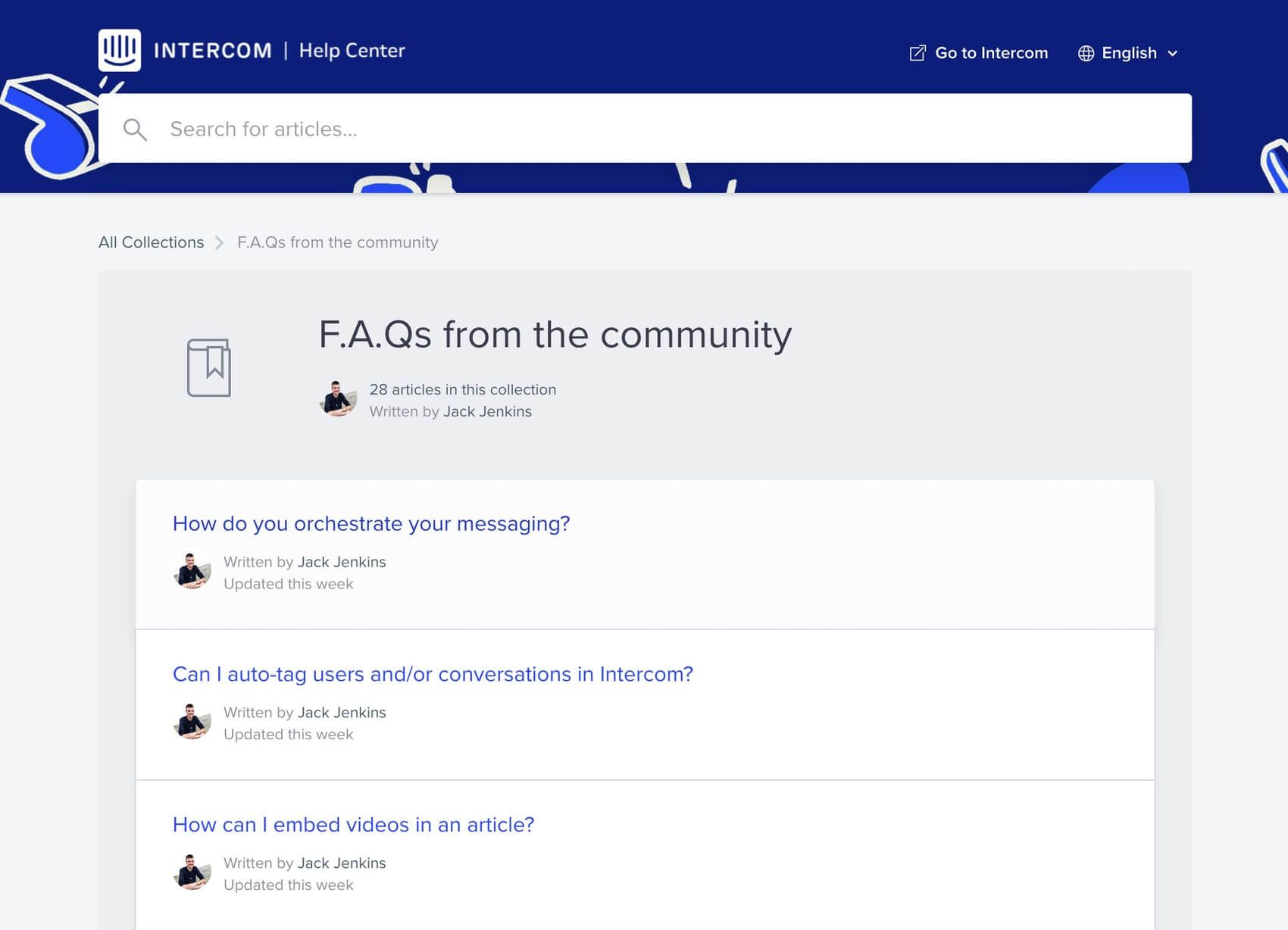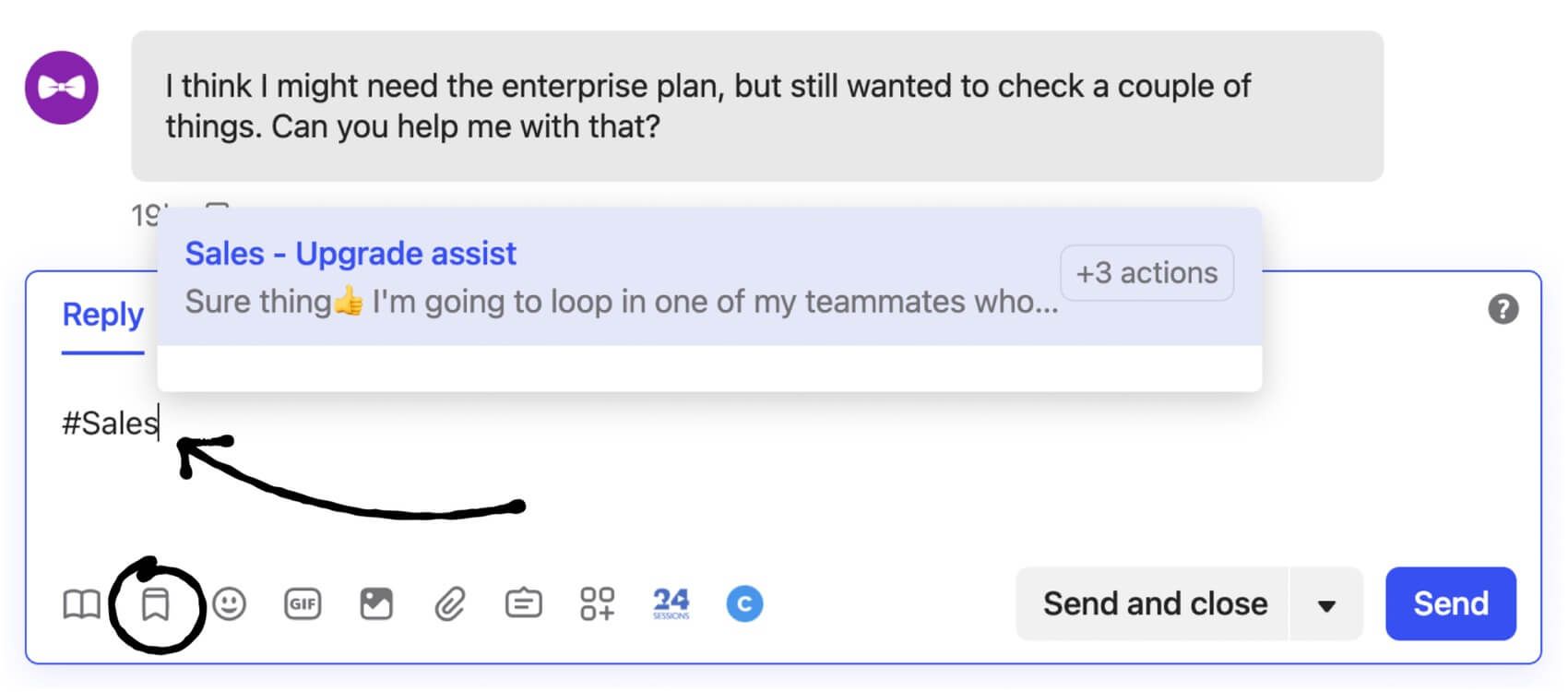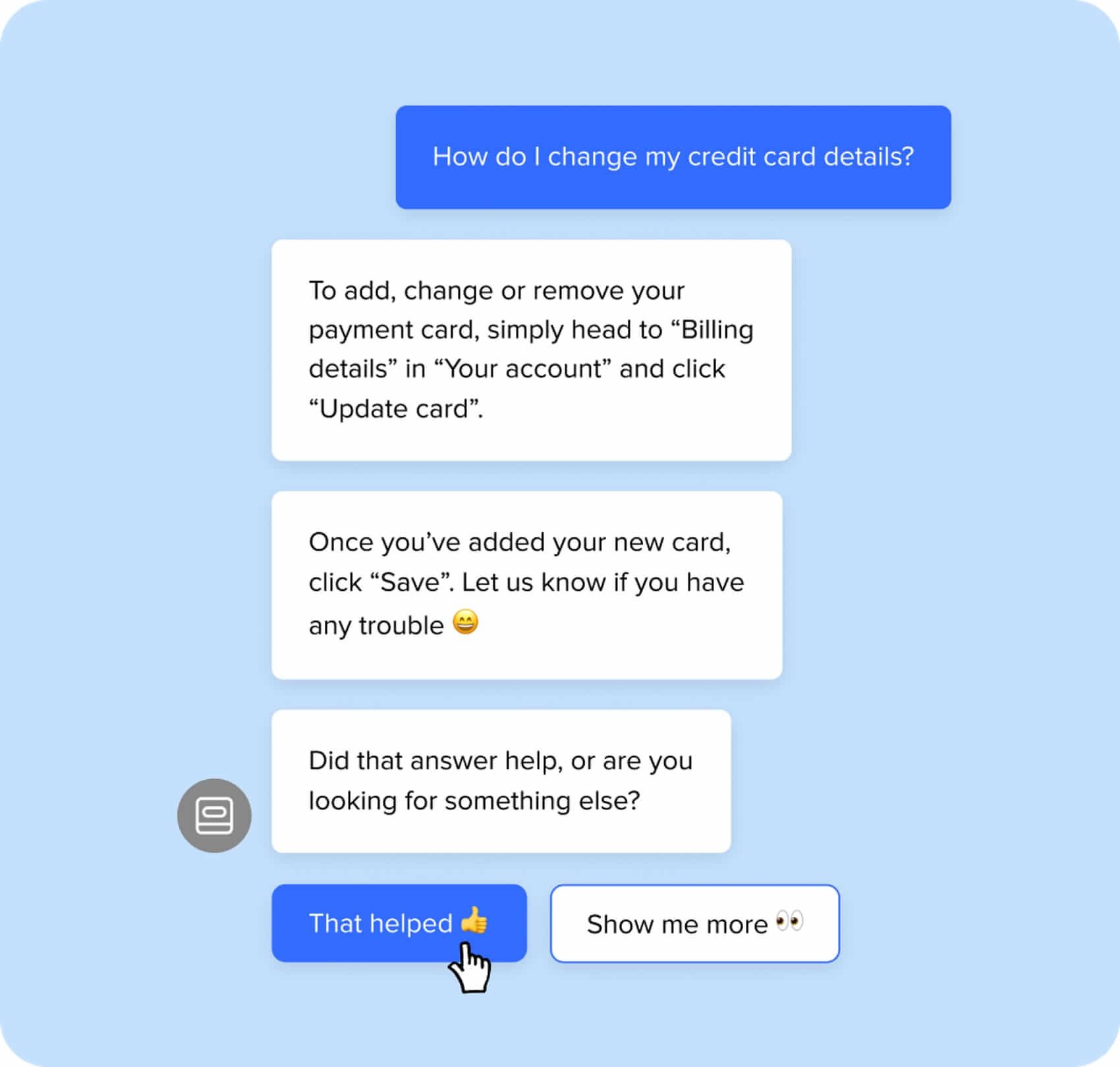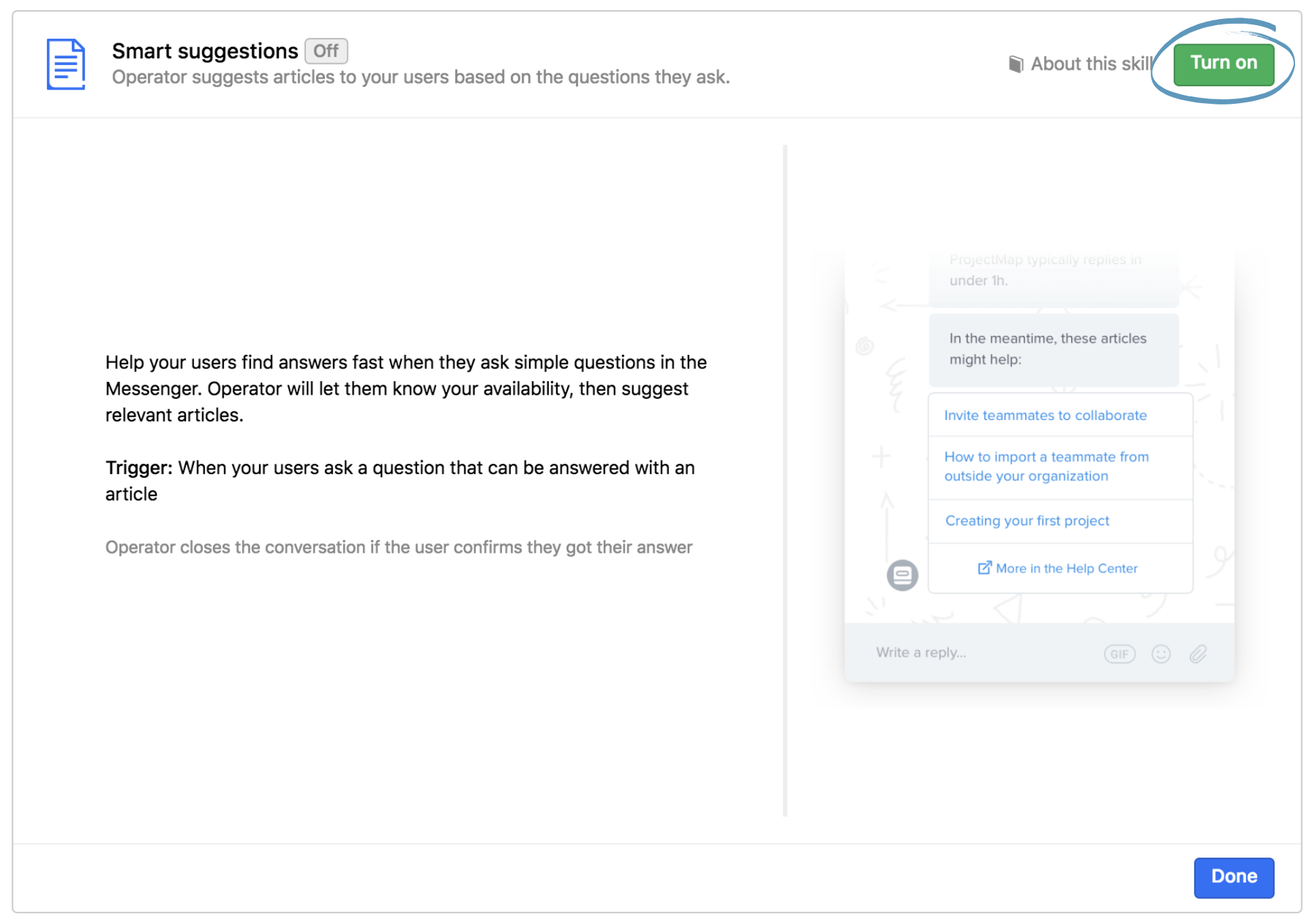
Enhance your answers – how to handle frequently asked questions
Main illustration: Sonny Ross
Our customers often ask us how they can run an excellent customer support operation. One of the most frequently asked questions we get asked is, well, how do we handle frequently asked questions.
No matter the industry, customer support teammates find themselves dealing with the same frequently asked questions – how to reset a password, how to change profile information, how to download invoices, etc.
Answering these kinds of binary questions, day in, day out, can take their toll – after all, a customer support teammate is at their most productive when helping customers with challenging, layered questions. Handling too many of the same type of simple questions can cumulatively have a demoralizing effect.
And that’s not the only cost – paying customer support representatives to answer the same questions again and again is an expensive business.
With this in mind, here are our best practices for ensuring your customers get the answers they need, while your customer support representatives get to do the most high-value work that keeps them motivated.
What is an FAQ page?
Every company should begin by compiling a comprehensive, scannable FAQ page or series of pages featuring concise answers to commonly asked questions. Whether you call it an FAQ page, a help center or knowledge base, collecting the resources and responses to people’s most common problems in a single, easily searchable location creates a first port of call for your customers.
“Your FAQ pages are among the most important sections of your website”
It’s no exaggeration to say your FAQ pages are among the most important sections of your website. That’s because they act as much more than mere support centers, but also serve to educate potential customers who are exploring your product or service.
Intercom’s Articles product offers a powerful way to create, organize, and present your help content. By creating an FAQ page or help center using Articles, you have an entire repository of articles that can help your customers search for the answers they need. You can group your articles by collection, so that they’re easily searchable, and even import articles from another knowledge base. Using our Articles Insights, you’ll get an overview of anything that your customers are searching for that doesn’t return an article, so you know what questions your customers are asking and what answers you need to compose and provide.
Examples of how we use FAQ pages at Intercom
A stand-out example of how to develop an FAQ page can be found in our own Help Center – for instance, our “FAQs from the community” collection, where we’ve gathered articles that deal with our customers’ recurring questions.

We also include a series of FAQs within each of our article collections, covering a key area of Intercom – for example, if someone lands on our Intercom Platform collection, they’ll see a series of FAQs related to the Platform, such as, “How do I untag users in bulk?” and “How can I embed a video in an article?”
Key to our approach is ensuring the material in our help center is consistently updated – the moment your FAQ page begins to gather any dust, users will be skeptical about the value of any of the information available.
Why you need more than an FAQ page to help customers
However, no matter how comprehensive your FAQ page or Help Center is, you can’t rely on it completely. That’s because the process of searching for answers, and weighing up the results to that query, can feel too cumbersome for a lot of people. Modern customers are incredibly busy – some would rather write directly to your support team to get a fast, accurate answer to their question.
“It’s essential to set up bots and automation to serve customers with the on-demand answers they need”
Of course, your support team won’t be available to answer every question that rolls in in real time. That’s why it’s essential to set up bots and automation to serve customers with the on-demand, accurate answers they need, exactly when they need them.
At Intercom, we use the Conversational Support Funnel to deliver efficient, personal support to our customers, at scale. It combines proactive, self-serve, and human support capabilities to get ahead of known problems before they arise, automatically answer repetitive queries, and quickly resolve complex issues.
With the funnel, most simple FAQs are resolved through proactive and self-serve support, leaving only the most complex and critical queries for your team, such as issues from VIP customers, emotionally-charged complaints, and complex troubleshooting issues.

4 ways we address frequently asked questions
At Intercom, we use Intercom’s Inbox’s features to reply to frequently asked questions as quickly, efficiently, and personally as possible. Making full use of these tools leads to satisfied customers, and frees up more time for your support team to get their teeth into meatier challenges.
1. Macros
With the Conversational Support Funnel, most simple FAQs will be resolved through the self-serve support layer via chatbots and contextual help content. However, some commonly asked questions will inevitably require a personal touch from your team – like high-touch sales queries and emotionally-charged complaints about known bugs or issues.
Even with these queries, your support reps don’t have to go it alone. You can arm them with the powerful automation and team workflows to handle these conversations with speed, transparency, and ease.
“Once you create a macro, it’s automatically shared across your entire team”
One of our most tried and tested solutions is our macros feature. This allows you and your team to craft ready-made answers that can be inserted into a reply with the click of a button.
Macros can be particularly useful for questions that require important information that can be dispersed in a short space of time – for example, explaining your pricing model to customers.

Once you create a macro, it’s automatically shared across your entire team within Intercom, so that everyone can benefit from a colleague’s ingenuity, and save themselves time typing out the same answer over and over again.
You can also apply multiple automated actions to macros, which speeds up resolution times and keeps customers satisfied. For example, if an important pricing query rolls into the Inbox for your support team to address, you can set up a macro to automatically assign the issue to your sales team, escalate it as priority, mark it as a potential upgrade, and send a ready-made reply to the customer – all with a single click.

Our macros composer also allows you to include GIFs, images, and hyperlinks, so you can show your customers how it’s done, or direct them to any external resources they might require. Additionally, you can include emojis to add that personal touch. You can also include variables within macros, so that they automatically populate with a customer’s first name, or a value for another attribute, e.g. their monthly spend for your app/site.
When it comes to using macros as a launchpad for crafting a personalized response, it’s good practice to tweak some of the more generic language you might use in a reply, so that it speaks to your customer’s particular use case.
One of the top tips from our support team is to use a macro as the basis for, or component of, an overall reply, instead of just inserting the reply and hitting “Send”. That way, the customer doesn’t feel like they’re getting a boilerplate response, and you combine the personal touch with the expediency of putting out a reply quicker than you normally would.
2. Resolution Bot
When a customer writes in with a simple question, like “How do I change my credit card details?” they expect a close-to-instant response. We recommend setting up a chatbot to automatically resolve these types of simple, frequent queries. Our data shows that chatbots speed up response times by an average of 3X, which significantly boosts customer satisfaction.
At Intercom, we use Intercom’s Resolution Bot to speed up self-service even further by surfacing relevant answers based on what customers are typing – before they even hit the enter key. Resolution Bot even predicts answers as soon as customers open the Messenger based on what page they’re on or other contextual cues.

3. Articles in the Messenger
Articles don’t just live in your Help Center to be discovered by your customers. If you offer conversational support, they’re also there in the Inbox for you and your team to share with customers in chat conversations. These empower your team to answer frequent queries that require a longer explanation – for instance, if a customer wants to know how to plan their project, you can send a how-to article with all of the details.
You can also use our Article Inserter app to include specific articles on your Messenger home page, or in an in-app auto message. Our Articles Search app, meanwhile, will let your customers search for the answers to their questions without ever needing to leave your Messenger.

4. Smart suggestions
One of the most powerful uses of Articles is our Operator bot’s smart suggestions feature – offering responses automatically is where the true power of Intercom’s Articles product reveals itself.

With this feature, Operator will step in to answer customer questions by suggesting relevant articles from your help center. Even better, Operator will learn from how you and your team manually suggest articles to customers, and use this data to refine its suggestions. This way, Operator learns when, and how, to step in to answer your customers’ frequently asked questions, so you don’t have to.
Operator’s smart suggestions, along with the Article apps for the Messenger and your knowledge base, offer your customers a great self-service support experience.
Why you need an automated solution for FAQs
By using these tools to cut down on the response time for frequently asked questions, you’re also making a direct impact on the human cost of answering these questions. There’s a perception that support teams are dogged with easy to answer, binary questions – in reality, we prefer to handle the meatier problems, but those basic questions are still a big chunk of our work.
“Operator learns when to step in to answer your customers’ questions”
By churning out the same, rote responses day in, day out, support team members can find themselves lacking a challenge and sliding towards boredom. Ideally, a human intervention should be reserved for those challenging, multi-layered questions that require some deeper investigation – in other words, engaging support cases that stimulate teammates and encourage them to think creatively, with a focus on problem solving.
Happily enough, that is also where we can provide the most value, to customers and to the business.








